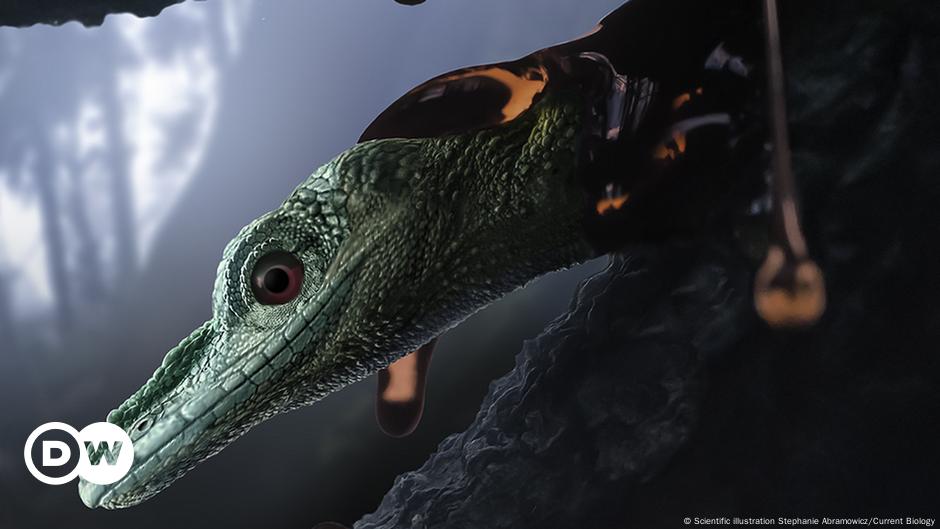Last year, a small fossil became big news. Trapped in ancient amber, it was touted as the smallest fossil dinosaur ever found. Known for little more than a peculiar skull, the so-called “eye-tooth bird” (Oculudentavis khaungraae) was featured as a toothed bird the size of a hummingbird, an avian dinosaur that flitted through prehistoric Myanmar some 100 million years ago. But since this Cretaceous creature appeared in scientific journals, debate and controversy have surrounded this strange fossil and its identity.
Today, in a peer-reviewed article and published in Current biology, Scientists have confirmed that this little creature was not a bird at all.
Second fossil found
A similar skeleton found in the same area now suggests that the Oculudentavis khaungraae it is actually a lizard. Its long snout had simply been flattened over time to make it look more like a beak. “Imagine you pick up a lizard and pinch its nose to make it a triangular shape,” explains Edward Stanley, director of the Florida Museum of Natural History. “It would be much more like a bird.”
Organisms preserved in amber are difficult to study from the outside, but the team created CT scans of the reptile within the second specimen and also reanalyzed the scans of the original specimen.
The second fossil differs in some respects from the first, so lead author and paleontologist from the University of Bristol, Arnau Bolet, and his colleagues gave the second, slightly flattened fossil, a new name: Oculudentavis Dragonnamed for the Naga people, who live in the vicinity of Myanmar’s amber mines.
The Specimen of “Oculudentavis naga” with preserved bone and soft tissues.
There are enough differences between the skull bones of the two fossils to make it appear that there were at least two species of Oculudentavisthe researchers propose, both representing some mysterious form of lizard.
“It’s a really strange animal. It doesn’t look like any other lizard we have today,” says herpetologist Juan Diego Daza of Sam Houston State University. “We believe that it represents a group of squamous that we did not know.”
Doubts about whether Oculudentavis They are from the lizard family
On the other hand, external experts such as Michael Caldwell, from the University of Alberta, suggest that Oculudentavis It might not be a lizard at all, but something much older and more unusual.
The unusual features of these two lizards are probably why it has been so difficult to place them in the animal kingdom. That, and the fact that the original skull of Oculudentavis its muzzle was slightly flattened.
Reconstruction of the original shape of these fossils was painstaking work, but it was eventually shown that the snout of Oculudentavis khaungraae it had been compressed during fossilization. Without this compression, it would have resembled the long snout of the other lizard fossil, Oculudentavis khaungraae, rather than a spike, the researchers say.
“Despite having a domed skull and a long, tapered snout, it does not present significant physical characteristics that could serve to sustain a close relationship with birds, and all its features indicate that it is a lizard”, says Susan Evans, who studies vertebrate morphology and paleontology at University College London.
The copy of Oculudentavis khaungraae it was so well preserved that scientists were even able to make out some soft tissue structures on the top of the muzzle and under the chin. They appear to be loose flaps of skin that the reptile could have inflated during its displays, something common in other lizards.
FEW (Current Biology, Living Science, CNN)





